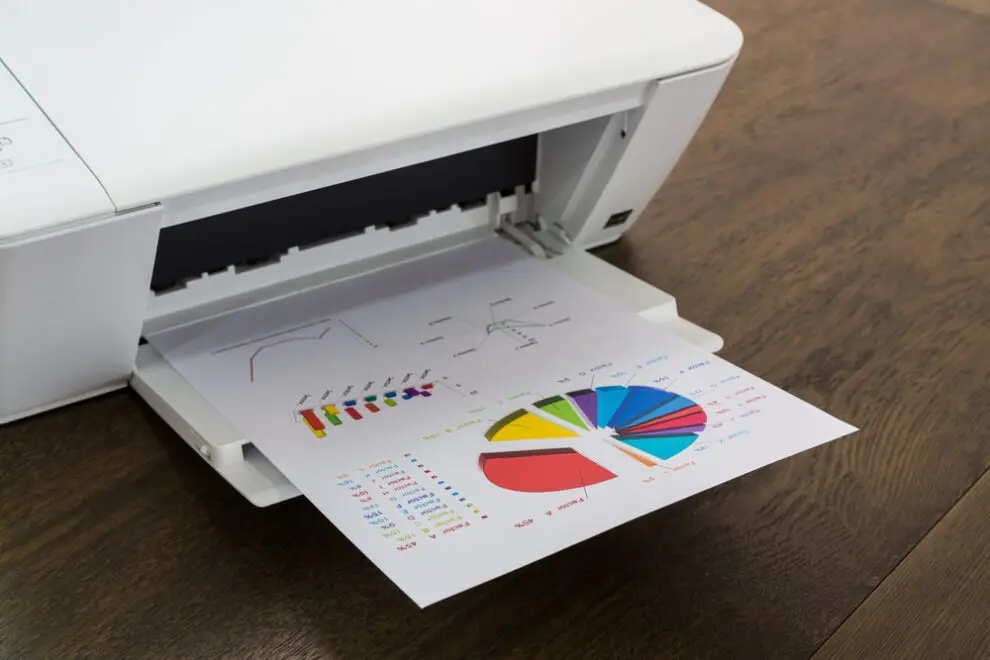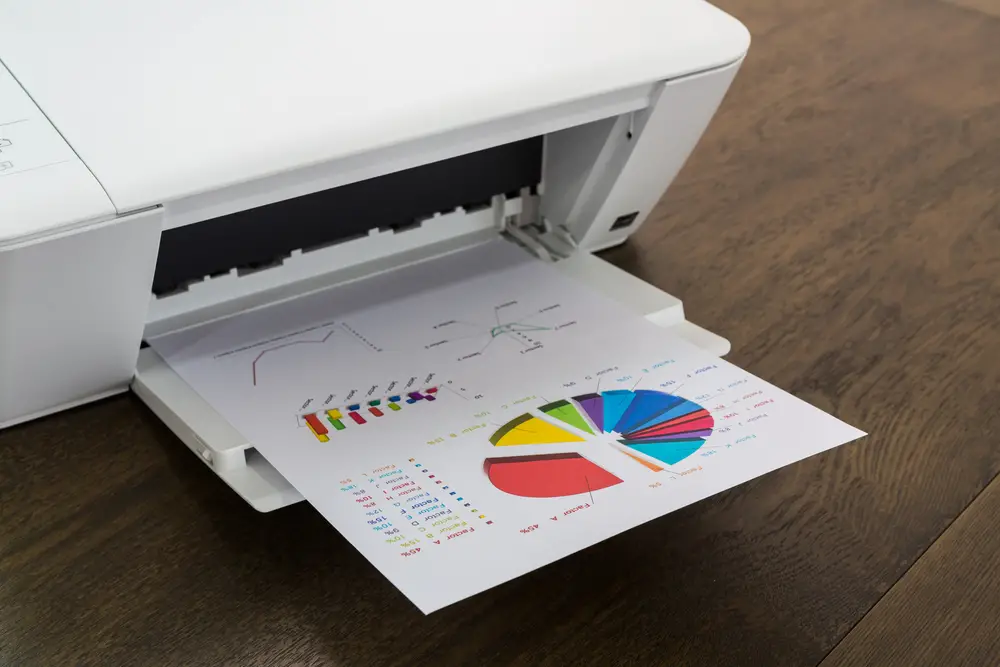Printer uptime, defined as the total operational time of a printer, is a critical metric that directly impacts a business’s overall efficiency. Efficiency, in this context, refers to the ability of a printer to produce high-quality prints with minimal resource waste. Understanding and optimizing these factors are vital for businesses striving to enhance their productivity in a competitive market. For more information you can read here.
In today’s fast-paced business environment, where every moment counts, the importance of optimizing productivity cannot be overstated. Maximizing printer uptime and efficiency becomes a strategic move that contributes significantly to streamlined workflows and improved overall productivity.
The Role of Printer Uptime
Definition and Significance
Printer uptime goes beyond a mere technical aspect; it’s a critical operational metric that plays a pivotal role in business success. It is the total duration a printer is operational and available for use. The significance lies in its direct impact on workflow management and the prevention of delays in essential processes. Understanding the definition and significance of printer uptime is the first step in harnessing its power to improve efficiency.
Impact on Workflow Efficiency
Efficient printing processes contribute directly to smoother workflow management, reducing downtime and optimizing the overall efficiency of daily operations. When printers are consistently operational, tasks are completed promptly, preventing bottlenecks and ensuring a continuous flow of work. Recognizing the profound impact of printer uptime on workflow efficiency is essential for businesses aiming to stay competitive.
Key Factors Affecting Printer Uptime
Regular Maintenance
Regular maintenance is a cornerstone of ensuring printer uptime. Scheduled check-ups and proactive repairs not only prevent unexpected breakdowns but also contribute to the long-term operational health of printers. By understanding the significance of regular maintenance, businesses can establish robust strategies to keep their printing infrastructure running smoothly.
Quality of Consumables
The quality of consumables, such as ink or toner, significantly influences printer uptime and efficiency. Using high-quality consumables not only extends the life of the printer but also ensures that prints meet the desired standards. Recognizing the role of consumables in the overall printing process is crucial for businesses aiming to optimize their printing operations.
Software Updates
Keeping printer software up-to-date is a fundamental aspect of ensuring continuous uptime and optimal performance. Software updates often include improvements in compatibility, security, and overall functionality. Understanding the importance of timely software updates is key to maintaining a reliable and efficient printing infrastructure.
Strategies for Enhancing Printer Efficiency
Choosing the Right Printer
Choosing the right printer is a multifaceted decision that goes beyond mere specifications. Considerations such as printing volume, speed, and additional features play a crucial role. Careful evaluation of these factors ensures that the selected printer aligns seamlessly with the unique needs of the business. Understanding the nuances of printer selection empowers businesses to make informed choices that directly impact efficiency.
Workflow Integration
Integrating printers into existing workflows requires a strategic approach. Seamless transitions between digital and physical documents can be achieved by incorporating printers into the broader business processes. Recognizing the role of workflow integration as a strategy enhances not only printing efficiency but also contributes to the overall optimization of operational workflows.
Employee Training
Employee training in printer usage and maintenance is an investment in sustained efficiency. Providing comprehensive training ensures that employees understand not only how to use printers effectively but also how to troubleshoot common issues. Recognizing the importance of ongoing employee training contributes to a proactive approach in maintaining an efficient printing environment.
Technological Innovations in Printers
IoT Integration
The integration of Internet of Things (IoT) technology into printers revolutionizes their management. Remote monitoring and management capabilities offer real-time insights into printer status. Understanding the transformative impact of IoT integration is crucial for businesses seeking to leverage cutting-edge technology for enhanced efficiency.
Cloud Printing Solutions
Cloud-based printing solutions represent a paradigm shift in the accessibility and flexibility of printing processes. Enabling users to print from various devices, regardless of physical location, contributes to increased efficiency. Recognizing the advantages of cloud printing positions businesses at the forefront of technological advancements in the printing industry.
Common Challenges in Printer Management
Troubleshooting Issues
Troubleshooting printer issues is an inevitable aspect of maintenance. Understanding common challenges, such as paper jams or connectivity issues, equips businesses to address these issues promptly. Developing a comprehensive understanding of troubleshooting contributes to a proactive approach in minimizing downtime.
Dealing with Outdated Equipment
Managing outdated printers poses unique challenges. Recognizing when it’s time to upgrade equipment is essential for preventing a decline in efficiency. Understanding the signs of outdated equipment ensures that businesses stay ahead in maintaining a modern and efficient printing infrastructure.
Overcoming Productivity Bottlenecks
Proactive Maintenance
Implementing a proactive maintenance schedule is a proactive approach to preventing potential issues. Regularly scheduled check-ups and preventive measures can identify and address potential problems before they impact printer uptime. Recognizing the significance of proactive maintenance contributes to a robust strategy for overcoming productivity bottlenecks.
Automated Monitoring Systems
Utilizing automated monitoring systems provides real-time insights into printer status and performance. These systems can detect issues, track usage patterns, and generate reports, allowing for swift responses to potential bottlenecks. Understanding the role of automated monitoring contributes to a more streamlined and efficient printer management process.
The Human Element: Employee Awareness
Importance of Employee Training
Employee training extends beyond technical aspects; it includes fostering awareness of responsible printing practices. Educating employees on efficient printer usage and the environmental impact of printing contributes to a culture of responsibility. Recognizing the importance of employee awareness ensures that efficiency gains are not solely technical but also behavioral.
Incentivizing Responsible Printing
Creating incentives for responsible printing practices reinforces positive behaviors. Whether through recognition programs or rewards for eco-friendly printing habits, businesses can cultivate a sense of responsibility among employees. Recognizing the role of incentives contributes to a holistic approach to optimizing printer efficiency.
Cost-Effective Printing Solutions (Continued)
Energy-Efficient Printers
Investing in energy-efficient printers is a strategic move for businesses aiming to reduce operational costs over time. Energy-efficient printers consume less power during operation, contributing to both cost savings and a smaller environmental footprint. Recognizing the long-term financial benefits of energy-efficient technology positions businesses as champions of sustainable and cost-effective printing solutions.
Case Studies: Successful Printer Optimization
Real-Life Examples
Exploring real-life case studies provides tangible insights into successful printer optimization strategies. Examining businesses that have implemented efficient printing practices and witnessed positive outcomes offers valuable lessons and inspiration. Understanding how others have achieved success becomes a roadmap for businesses seeking to optimize their printing processes.
Positive Outcomes
Highlighting the positive outcomes experienced by businesses that prioritize printer uptime and efficiency showcases the tangible benefits. From reduced costs and increased productivity to improved environmental sustainability, these outcomes underscore the transformative power of effective printer management. Recognizing the positive impact encourages businesses to invest in optimization strategies.
The Future of Printer Technology
Emerging Trends
Exploring emerging trends in printer technology unveils the exciting possibilities shaping the future. From advancements in print speed to innovations in materials and functionalities, understanding these trends prepares businesses for upcoming changes. Recognizing emerging trends is key to staying ahead in the dynamic landscape of printer technology.
Predictions for Advancements
Making predictions for future advancements in printer technology involves anticipating breakthroughs that could redefine efficiency. Whether it’s the integration of artificial intelligence or advancements in eco-friendly printing, recognizing potential developments allows businesses to align their strategies with the evolving landscape. Embracing these predictions positions businesses as innovators in printer technology.
12. Conclusion
Recap of Key Points
Summarizing the key points reinforces the importance of optimizing printer productivity for enhanced business efficiency. From understanding printer uptime to embracing technological innovations, each aspect contributes to a comprehensive strategy for success.
Encouragement for Implementation
Encouraging businesses to implement the outlined strategies serves as a call to action. Emphasizing that the power to enhance productivity through printer optimization is within reach inspires businesses to take proactive steps. Recognizing the value of implementation is the final push towards a more efficient and productive future.








